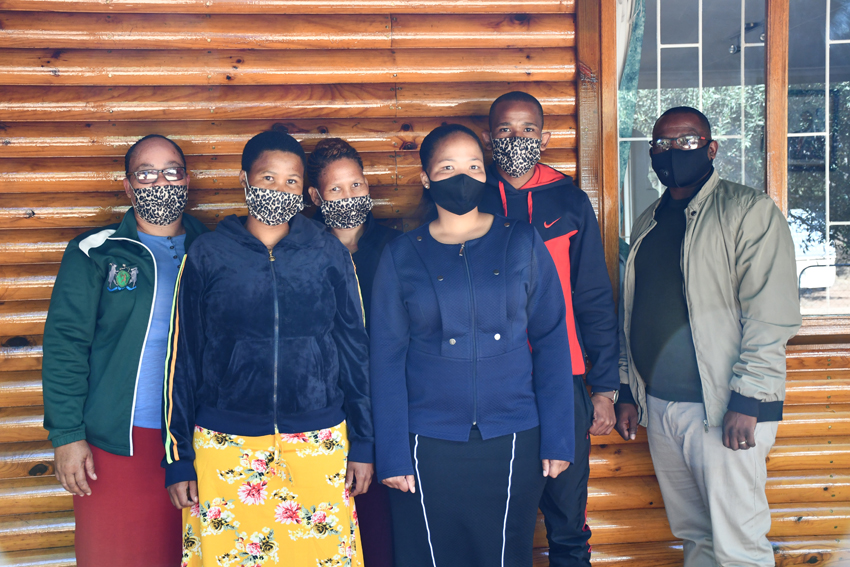Forty years of fighting for literacy The case of Naro Bible translators
16 Dec 2021
As the government will be introducing the use of mother-tongue as a medium of instruction in primary schools next year, Naro, the major San language spoken in Ghanzi District, will be one of the languages used. The language is actually a cluster of mutually intelligible San dialects including ǀAmkwe, ǀAnekwe, Gǃinkwe, ǃGingkwe, Gǃokwe, Qabekhoe, Tsʼaokhoe, Tserekwe and Tsʼao. The idea in teaching children in their mother tongue is to help them transition from home to school environment in a language they can understand.
In selecting languages to be introduced, government had to consider among others, if the specific language already had an alphabet and if it was documented or read by any of its speakers, be it in Botswana or neighbouring countries.
While other languages such as Shona, Ndebele, and Afrikaans already have established orthographies, the first two in Zimbabwe, and Afrikaans in South Africa and Namibia, Naro is peculiar in that its alphabet originates in Botswana.
This is thanks to the Naro Language Project, a brainchild of The Reformed Church of the Netherlands, which has a reasonable following in the Ghanzi area.
The Church started the project in the 1980s when it created the Naro alphabet with the aim of promoting literacy among Naro speakers.
Two men, Aron Johannes and Dcatshau Qhomatca, stand out among the tribe as pioneers of the idea.
The two spent many hours writing songs and other material in an orthography they felt fairly represented what could pass off as appropriate spelling, punctuation, hyphenation and so on and so forth for writing Naro.
Foremost in their minds was a desire to translate the Bible into their language. Realising the seriousness of the men, and the thirst of the Naro community for literacy, the Mission of the Christian Reformed Churches in the
The Netherlands dispatched man and wife, Hessel and Coby Visser to come and assist in the translation of the Bible.
This was in 1990. And so began in earnest the work of translating the Bible into Naro, and one of tmajor literacy works in western Botswana. The major objective of the project, as set back then, remains, namely, to describe and develop an understanding of the Naro language, increase literacy by teaching Naro speakers how to read and write, and translate the Bible into Naro.
The project is headquartered in D’kar under the auspices of the Reformed Church.
Enter project manager Mr Isaac Saul, a bona fide Naro. “This project started with the aim of bringing understanding of the Naro language to its people.
I have been participating in its establishment from its inception and have benefited immensely as I learnt translation and orthography in the process,” he says.
He has much respect for the Vissers who guided the standardisation of the language and fostered its literacy, by first establishing the Naro Writing System that matched local symbols in 1997.
“Naro is one of the dominant languages spoken in the Ghanzi District and there is a certain standardisation reached through decades of language work done through the project,” he says.
Many nights, months and years later, there are enough Naro readers and writers for the language to be regarded as having an established alphabet.
“It took a great deal of hard work and sacrifice by men and women who wouldn’t rest until the language was recognised,” he pauses, then lets out a long sigh, as one who has been labouring. In 2001, a Linguistic Board was established and the University of Botswana assisted in refining the Naro Language orthography.
“A lot of work has since gone into employing the latest orthography; this includes the production of monthly magazines, updates on social issues, and information booklets. We also offer Naro advanced courses,” he says, a satisfied look, even pride,brightening up his face.
Nearly three decades later, specifically in 2012, the dream of the two visionaries, Johannes and Qhomatca came to pass a the community managed to translate the whole Bible into Naro. Not only that.
They also were able to design Naro specific Bible translation software containing all versions of the Bible, from the King James Version to Good News Bible! And all this, done using scientific methods: “We apply principles of translation using the Hebrew text with the engagement of the community until the final stage, when we engage a consultant to finalise the translation. We have been using the consultant for the past 25 years and he has done a great job.
The last stage is a bit hectic as it entails linguistic research, which includes grammar, syntax, phonology and morphology, but also a lot of reading and background checks.”
So determined are the translators that they have already printed the New Testament with an oral version created for those who cannot read. Work is afoot already, to print the Old Testament and produce an oral version.
“The reception of our work by the community has been amazing and a lot of scripture teaching has been done in Naro,” says Mr Saul, a look of appreciation as readable as the Bible on his face.
To ensure the orthography remains sturdy and is well propagated; they have a dedicated outreach team that often visits all villages in which the language is spoken, to teach the speakers how to write it.
They also share with the speakers the importance of maintaining their language through speaking it and teaching it to their children.
“Our outreach programme includes visiting schools to help teachers with name pronunciations.
We also provide teaching assistants to help Naro pupils understand what they are taught in their language”. Saul and his team are not content with the fact that they are already ahead of the game in terms of advocating mother tongue application in schools.
“Lately I have been spending sleepless nights working on a paper to submit to the Ministry of Basic Education as the government prepares to launch mother tongue teaching in schools.
This is certainly an opportunity for us - as it is for other indigenous languages - to gain recognition,” he says, for a moment his mind appearing to drift, perhaps a wisp of worry there, about whether the government will accept his language among those to be used as a medium of instruction.
Saul needed not worry, for five months into our interview, the government announced that Naro would be among the first mother tongues to be used in schools.
His position paper to the ministry and all the hard work over the last 40 years surely paid off.
And so, pupils in Qabo, Kuke, Ghanzi, East and West Hanahai, Chobokwane, Kole and CharlesHill among others, will,beginning next year, be instructed in Naro, thanks to the hard work, and importunity of the men and women of D’Kar and The Reformed Church. ends
Source : BOPA
Author : Booster Mogapi
Location : D’KAR
Event : FEATURE
Date : 16 Dec 2021







